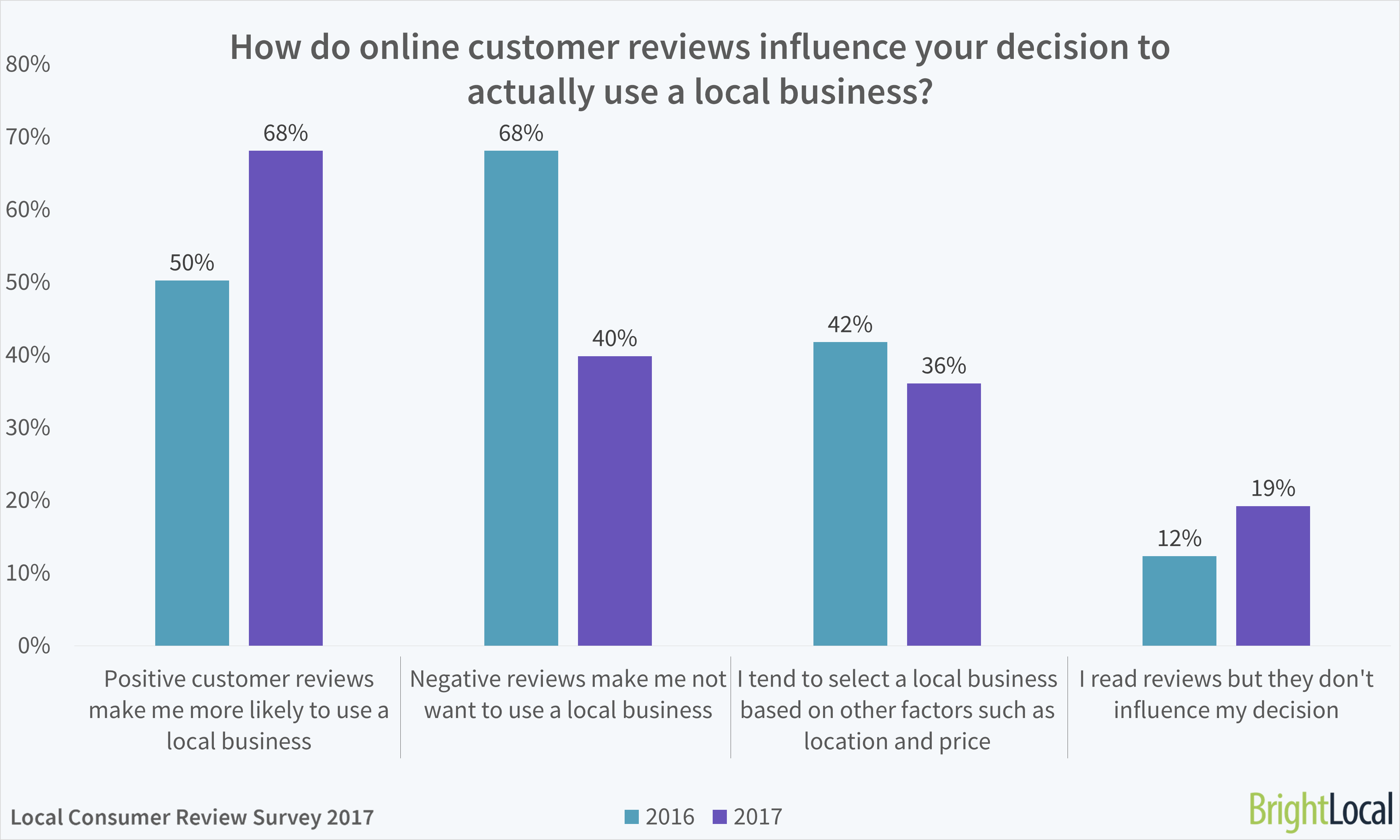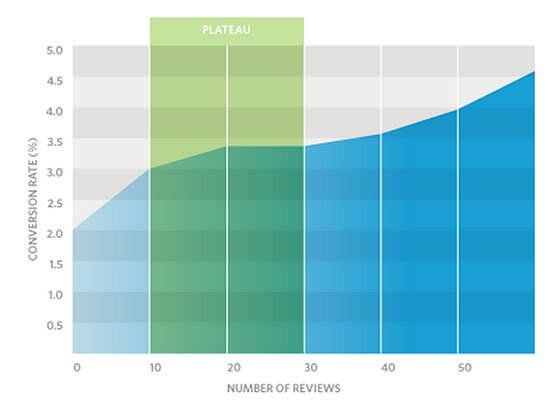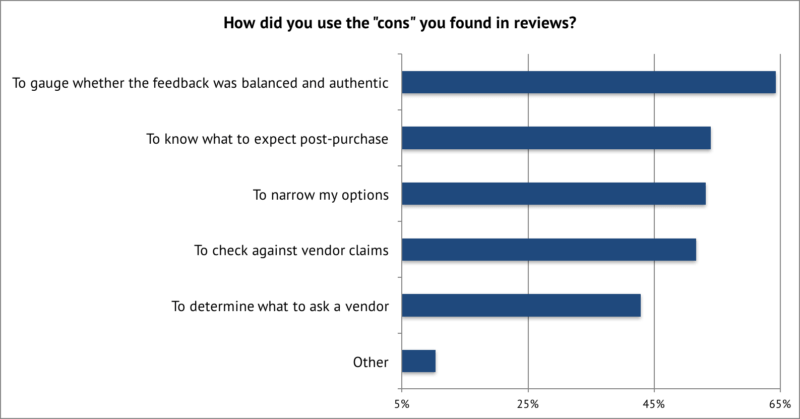Marketing strategy has always been in a state of flux.
One of the most recent trends to catch fire, has been user-generated content. And along with it comes a greater focus on authenticity.
Marketing strategies are understandably more geared towards customer engagement than ever before.
Review platforms in particular are effective when it comes to user-generated content. Platforms like Yelp and TrustRadius make it exceptionally easy for consumers to quickly grasp how their peers perceive both local and national brands.
There’s no doubt that most marketers are aware of the influence these reviews can have on the buyer’s journey. In fact, a recent study conducted by BrightLocal indicated that 85% of consumers trust online reviews as much as personal recommendations when making purchasing decisions.
They found some other useful info as well. Check out the below chart, that shows just how much impact customer reviews can have.

Image Source: BrightLocal
It should be obvious them, that driving reviews as part of a comprehensive marketing strategy is as important as ever.
Unfortunately, many marketers are sitting on a goldmine of information that is often underutilized.
Besides the obvious role reviews play in acting as the main catalyst in steering purchase decisions, user reviews can also play a vital role in improving your company’s online visibility. That in turn can help guide product development and shine a light on your brand messaging.
Below we’ll detail 3 ways your business can leverage customer reviews to drive authenticity and transparency, and how to get started.
Why Are the Benefits of Customer Review?
Improved Online Visibility
Having a strong online presence, whether you are a large organization or a small startup, is key to increasing your visibility within search engines.
One of the main elements search engines factor into their ranking algorithms is how fresh and optimized your content is. Utilizing user reviews as fresh content will undoubtedly boost your SEO and online traffic.
Consider driving reviews on high-trafficked review sites and add them to your website and testimonials page. Adding reviews to landing pages doesn’t just increase trust – it can actually boost conversions!
Check out this data from a Reevo study if you’re still not sold.

Image Source: Reevo
Harnessing these reviews alongside case studies and testimonials on your website pages can help complete your brand story and highlight the value of your solution.
Product Improvements
What better way to get an “on-the-ground” view of problem areas with your service or product, than to hear it straight from the mouths of your customers?
Reviews often grant incredible insights into what is working well and what needs refinement. This isn’t even to mention that reviews can be used as an effective alternative to more expensive product testing options like focus groups and paid user testing.
Business owners are always looking for ways to save time and money, and this can definitely pay dividends when used correctly.
Foster Customer Engagement and Retention
Reviews give your brand the chance to engage with customers — both happy and unsatisfied.
If a customer has positive things to say, be sure to reach out and thank them. On the other hand, if you get a negative review, don’t worry too much. In fact, they can be an opportunity to showcase your customer service.
A study conducted by TrustRadius found that 65% of buyers specifically seek out negative reviews as a way to gauge whether the company’s response was balanced and authentic.

Image Source: TrustRadius
By using negative reviews as a chance to engage with customers, you are not only showing the negative responder that you care and will take the steps necessary to improve, but also that you’re responsive and attentive.
How to Start Collecting Reviews
To get started, first decide if you want to run your own campaign or run a program through an existing review aggregation platform.
If you decide to go with a review website, you’ll next need to choose which one/s you want to leverage. Depending on the space you’re in, buyers tend to visit a variety of websites when searching for reviews. So it’s usually wise to focus on 2-3 sites that you would like to work with, as opposed to just 1.
Once you determine the review sites you want to use, you’ll want to build a custom landing page to direct reviewers to your chosen 3rd party platforms.
Then, create a list of customers to email, and start your outreach! Ideally, you will include everyone in your customer base. Keep in mind that you want to target a broad set of customers to get a representative and fair sample of responses. Don’t cherry pick reviewers!
A diversity of responses is a good thing. It can also help you represent the different personas and use cases for your product or service.
In your outreach messaging, it can help to offer a small incentive such as a gift card or branded swag to encourage reviews. Just be sure to follow up if you haven’t received a response after the first or second try, and be sure to track the results throughout the campaign.
Now armed with an arsenal of reviews — it’s time to have some fun!
Start by adding those reviews you collected to various touchpoints on your website and marketing collateral.
Last but not least, be sure to engage with reviewers in a timely manner. And pay attention to any similarities or patterns you may see emerging in your reviews, so you can be on top of what you are doing well and what you can improve upon.
Kelsey Reaves is a content-focused Marketing Manager at TrustRadius, a trusted site for B2B software reviews. When she’s not sharing her knowledge on the latest trends in software and B2B news, she nurtures her passion for travel by exploring new cities and binge watching Anthony Bourdain.








